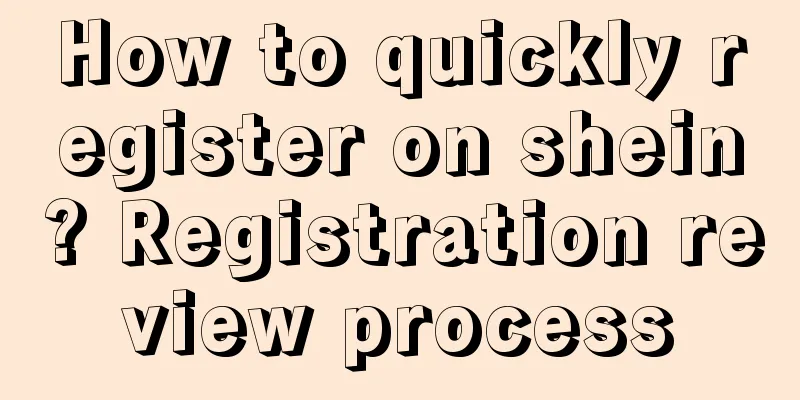How to conduct operational data analysis?

People often ask me questions like how to do operational data analysis, how to do product data analysis, how to do APP data analysis, etc. Today, let's talk about how to do operational data analysis. 1. What is operational analysis?Why do many people have doubts about operational data analysis? A big reason is that they don’t know what operations are all about. The word "operation" itself is very vague. Many people say that operation is a miscellaneous position, because operation requires organizing activities, matching links, placing advertisements, and also attracting traffic through channels. It seems that everything is related to operation. If the positioning of operations is not clear, then the analysis of operational data will be even less clear. So, what exactly does operations do? In a previous article, I mentioned what exactly is business? The definition of business is that given an input, after my business model runs, it finally outputs an output with commercial value. For example, I input some traffic, sort it out through my business model, and finally output precise user groups. This business may be called user operation within the company. Operations are the people who maintain the operation of various business models within the company. Their responsibilities are first to maintain operations, and second to maximize the input-output ratio so that supply and demand are optimally matched. Based on this definition, we can understand what operations actually do, and give a few examples. Category operation in e-commerce, the input of category operation is various commodities without rules, and the output is commodities with commodity stratification and different operation strategies. Category operation improves the overall operation efficiency through the refined operation of commodities. Another example is channel operation. The input of channel operation is the budget for investment. The output of business operation through channel operation is the business flow and transactions brought by different channels. If we understand the concept of operation according to the input-output model, then data analysis of operations will be easy to do. Operations consist of three parts: input, output, and business actions, so there are several directions for analysis:
2. Improve the quality of inputThe first is to improve the quality of the input. Take channel operation as an example. The input of channel operation is the resources to be delivered. The operation action is precise delivery, that is, targeted delivery to different channels. The final output is the users who download, use or purchase brought by the delivery action. The ultimate goal of good channel operation is to increase the number of users at the output end. To achieve this goal, we can improve the quality of the input end. For example, we can analyze the characteristics of product users and the efficiency of channels, select the best channels, and focus our investment on better channels. Another example is user operation . The input end of user operation is the users of the product, and the output end is to organize these users into groups of people at different levels and with targeted operation actions, thereby enhancing the overall commercial value of users . If user operations want to output more high-quality target user groups at the output end, they can also start from the source and make the initial user group itself a high-quality user group. This can be achieved through cooperation with channel operations. User operations can analyze user characteristics to allow channel operations to make more accurate channel delivery, product managers can make functional features that are more suitable for the target population, and event operations can make more matching event copywriting. This can improve the quality of product users and increase the number of high-quality people ultimately output. 3. Improve the effectiveness of business actionsThe second is to improve the effectiveness of business actions. Take channel operation as an example. If the original channel delivery only uses one copy, then we can continue to optimize the characteristics of different channels, design different delivery copy and materials, improve the matching degree between delivery content and channels, and improve conversion efficiency. With the same number of exposures, a more accurate delivery strategy can generate more user groups. The same goes for user operations . In order to enhance the commercial value of end users, we can work on the effectiveness of business actions. For example, we originally only divided users into new users and old users, and then performed different operational actions for new and old users. The efficiency of this operational action is not very high because its user classification is too coarse. The final commercial value is also limited. In order to improve the final commercial value, we can analyze the commercial value of different groups of people, and finally divide users into five to six categories through the RFM model, and perform targeted operations for these different types of users. Since the classification of the group is more accurate, the matching business actions are more effective, and the overall commercial value is improved through the effectiveness of the operational actions. 4. Improve the matching degree of output endThe third method is to improve the matching degree between the output end and business needs. Taking channel operation as an example, the ultimate output of channel operation is downloads, transactions, and returning users. If the company is currently pursuing the user scale of the product, then channel operations must also revolve around the larger goal of user scale and find user channels and delivery methods that are easier to download and retain . If the company's overall strategy has changed from pursuing user scale to pursuing commercial transformation , then if channel operations still output users in the original way, it will lead to a mismatch between the output of channel operations and the goals of the company's overall strategy, reducing the value of channel operations. At this time, channel operations need to adjust the original operation strategy and change the final output from "number of downloading users" to "number of transacted users". The output format has been modified, and both the input and business actions need to be changed. Data analysis can analyze the channels and delivery methods suitable for "transacted users" based on the new output. Similarly, if the company is currently pursuing user scale, then the output of user operations should be user groups with different levels of activity or groups suitable for different activation methods. The classification must be centered around improving user retention and activity frequency. However, if the company's strategy shifts from user scale to commercialization, then the original output is no longer in line with the company's overall strategy. No matter how hard you try at the input end or the middle business execution end, the effect is still not good. At this time, you need to change the final output and turn to a user classification method with commercialization as the goal. V. SummaryNormally when we talk about operational analysis, we tend to stay on the surface. We are talking about the analysis methods of operational analysis. For example, when we talk about user operations, there are these methods:
These methods are all correct, but they are not close to reality. They only talk about methods, not the problems they solve. If you understand the role of operations now, it will be much easier to talk about how to do operational data analysis. Input: User operations must first improve the quality of the input end, so we must first understand who the high-quality users are, and thus there is user portrait analysis. Business actions: Operational stratification is generally based on specific user behaviors. To distinguish users with different stickiness, we must first look at the distribution of retention, conduct user retention analysis and activity analysis; then analyze the behavioral characteristics of different groups of people and conduct behavioral analysis. In this way, we can divide different stickiness groups, use low stickiness for recall, and high stickiness for conversion. To recall users with low stickiness, we need to know the loss situation, conduct loss analysis and behavior analysis, and find out the reasons for the loss. Output: Do the business actions operated by users bring value to the business? This can be used to conduct a user value assessment analysis to see whether there are significant differences in the value of users in different stratifications. It can also be used to see whether the overall business value after stratification is more effective than extensive operations. Now you should know how to do operational analysis. The analysis methods are just clouds. Knowing what problem to solve will naturally tell you what analysis to do. Author: Jason Source: WeChat public account "Sanyuan Variance" (ID: sanyuanfangcha) |
<<: How to improve the ability to draw conclusions from data analysis
>>: What is a data analysis project and how to do it?
Recommend
Revealing the secrets of refined operations in private domains: four dimensions, three key points, and three steps to help you master the secrets of private domain traffic!
"Private domain traffic is not a pond, but a ...
Starbucks is playing the co-branded marketing card again, and the "anxiety" is about to overflow
Starbucks, which rarely collaborates with others, ...
How to set up automatic bidding on eBay? What are the bidding rules?
eBay has two product pricing modes: fixed price an...
What is the difference between Amazon replenishment limits and warehouse capacity?
Merchants who open stores on Amazon will definitel...
Is Shopify the same as Shopee? Is Shopify B2C or C2C?
There are many cross-border e-commerce platforms o...
Brands sell stories
This article analyzes the key logic of brand stori...
Why can’t you learn from Luckin’s private domain? A private domain director’s soulful reflection
Why is it that Luckin Coffee can be so successful ...
Five common senses to get through the new consumer brand positioning
The article proposes five common senses, opening u...
How to advertise at zero cost
In this article, the author selected the well-know...
How to run an infinite game with limited resources
This article starts with the example of Internet e...
JD.com is going further and further on the road of e-commerce!
Is it necessary to offer low prices when doing e-c...
Dong Yuhui's departure is a good thing for Oriental Selection!
In the business world, every major personnel chang...
The consumer market is experiencing a trend of “exquisite mass merchandising”
What is "sophisticated mass merchandising&quo...
How much does it cost to ship from eBay to China? Is there any customs duty in China?
As one of the world's largest online auction a...
Young people make money during the Spring Festival: cooking for 8 days is equivalent to a month's salary, feeding pets for half a month earns 20,000
The designated drivers in Wuhan earn more than 1,0...









